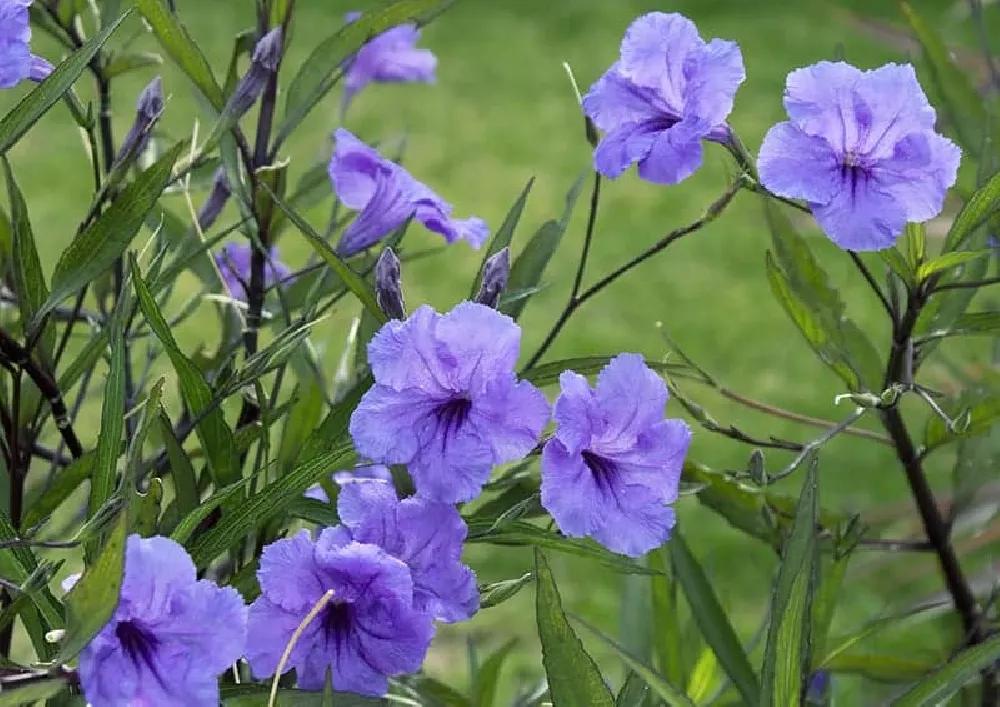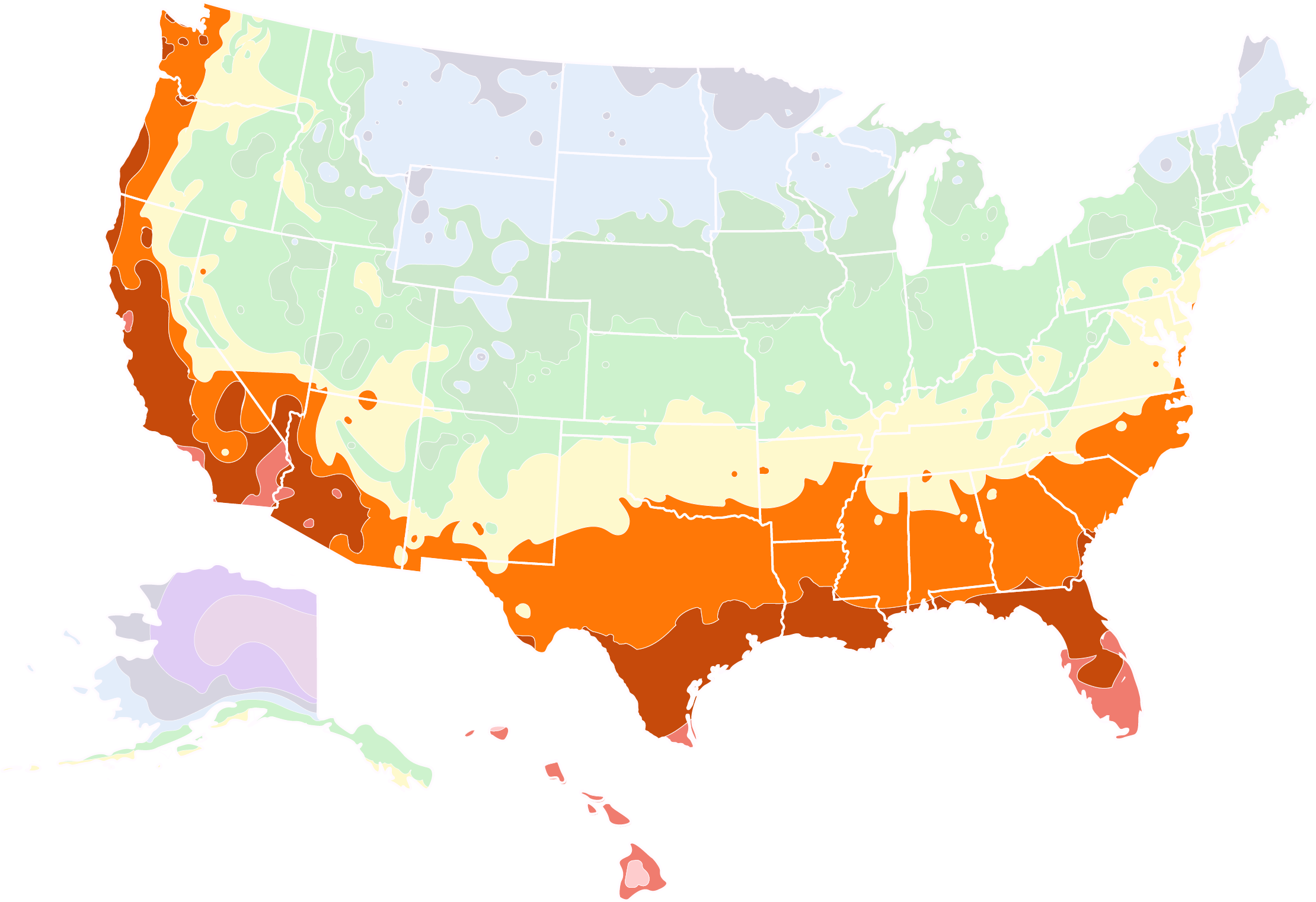- Home >
- Ornamental Plants >
- Mexican Petunias
Mexican Petunias for Sale - Buying & Growing Guide
Shipping Details:
Products shipped through FastGrowingTrees.com. Once your order is shipped, you’ll receive an email with a tracking number and estimated delivery date. Most orders will ship immediately.
Mexican petunias are vibrant, showy plants that are drought and heat resistant. They add easy color to a sunny spot but also do well in shade. They grow well in containers, and their aggressive growth makes them perfect for filling in bare spots in your garden. Depending upon your climate these shrubs can be grown as hardy perennials or as summer annuals. Once established they will deliver constant blooms from May through November. Here are some other noteworthy facts about Mexican petunias:
- Are most frequently purple, but they are also available in white and pink.
- Blooms last only a day, but the plant generates profusely.
- Is a thriller plant, meaning it will thrill, fill, and spill perfectly out of containers.
Plant Care
Sunlight
Loves full sunlight but will grow in partial shade. Too much shade leads to a loose growth habit.
Watering
Can withstand both wet soil and droughts. Best to water deeply when the soil becomes dry.
Fertilizing
Does not need much fertilizer. A yearly application of compost or a balanced fertilizer will encourage healthy flowering.
Planting and Care
Planting instructions
Mexican petunias are hardy in USDA hardiness zones 8 through 11. As its name indicates, Mexican petunias are native to Mexico and South America, and are most frequently seen in sunny, warm climates. They can be grown in shade or sun, but will bloom more profusely with direct sunlight. The shrub is drought tolerant, but thrives in areas with high humidity and frequent rain, leading to it being considered invasive in Florida. In cooler climates, this plant is the perfect showy, heat and drought tolerant warrior for stone patios or walkways that really cook in the hottest summer months.
Given the warmth that it needs, the Mexican petunia is very easy to grow. When selecting an area in your garden, look for a spot that has well-drained, fertile soil that is neutral or slightly acidic. When planting Mexican petunias in an area with poor drainage, mix in some sand before placing your plant. Be sure to deeply water immediately after planting or transplanting.
Watering and nutrients
The Mexican petunia can withstand long periods of drought, yet also thrives in marshy areas along riverbanks. The plant has the greatest water requirements immediately after it has been planted, when it is acclimating to its new environment and its roots are getting established. After that it can go entire seasons without water, though plants in hot, sunny spots will benefit from an occasional deep watering.
Mexican petunias are extremely hardy, butaking in some fertilizer, manure or compost into the soil at its base will assure abundant blooms throughout the season, especially if it is done early in the springtime.
Pruning
Mexican petunias do not require any pruning, but pulling off dead flowers and leaves will keep it looking its best. Because it can be invasive, many gardeners pull off the seed pods in order to prevent self seeding and to keep an eye out for new growth emerging from the shrubs underground root system.
Pests, diseases, and animals
The Mexican petunia is resistant to diseases, pests, and animals. The leaves are unlikely to turn brown unless the plant is exposed to cold.
Soil
As the Mexican petunia will grow in both dry or wet soil, the soil quality isn’t terribly important for this plant. It will grow in almost any condition, including poor quality soil, but for best results, you should use a well-draining and fertile soil.
The only soil a Mexican petunia may have a problem with is very acidic soil, so if your plant is struggling to grow, you should consider checking the pH of your soil in case this is the reason.
Light
Mexican petunias thrive in full sun. When allowed to grow in these conditions, they will produce an abundance of flowers. They will also grow in partial shade, though plants grown in a partly shaded position may experience less flower development than those grown in full sun. As the plant is not sensitive to heat, the time of day when the Mexican petunia gets direct sun is not important, though in general, sun in the morning and shade in the afternoon is preferable when growing a plant in partial shade.
If you grow these plants in containers, you have the option of moving them throughout the year to a full sun position during summertime, then a more protected and potentially shaded position during cooler months. Aside from flower production, the other way Mexican petunias are affected by light is with the color of their stems. In bright light, their stems will be purple, while plants kept in partial shade will have bright green stems (SF Gate).
Temperature
These plants are hardy through USDA hardiness zones 7 to 11. They enjoy the warmth and can happily grow in a full sun position where they can bask in the heat all day long. They will thrive in warmer climates and have naturalized themselves in parts of Texas, Hawaii, and South Carolina. They have also naturalized in Florida, where they grow so aggressively that they are able to choke out other plants that are native to the state.
Mexican petunias are very heat-tolerant, so don’t feel the need to shade them to protect them from the heat. They are most tolerant of the heat when grown in moist conditions and note that when grown in a hot climate, the plant will like to be watered more frequently. Mexican petunias are a very hardy plant in many aspects, and they will tolerate a wide range of suboptimal growing conditions, but the one area in which they fall down is in very low temperatures.
If you are growing these plants in a cooler climate, they should be protected from cold winters, either by moving them to a protected position out of the cold breeze, by bringing them indoors or by covering them with gardening fleece. When growing in a colder climate, grow your Mexican petunias in containers so that you have the option of portability during the winter.
Propagation
Mexican petunias will propagate easily from stem cuttings in the summer months, but this is not something that most gardeners have to do, as the plants readily self-seed to supply the garden with an endless supply of new Mexican petunias.
If you want more of this plant growing in your garden, simply allow the flowers to turn to seed; they will drop to the ground and sow themselves where they land. The plant can have a tendency to self-seed quite aggressively, with the seeds dispersing themselves as much as 10 feet away from the plant. If you would rather not have your garden taken over by Mexican petunias, you will need to deadhead the blooms once they fade.
Flowers
The flowers of the Mexican petunia bloom from the middle of summer through to fall. They typically measure around 2 inches in diameter and have a delicate lilac-blue color. They resemble petunia’s, as you would expect from their common name, but in fact, the Mexican petunia is not a petunia at all. These flowers have a trumpet or bell shape, and rise high above the foliage of the plant, growing from dark purple-hued stems.
They have no scent but are still very attractive to butterflies, hummingbirds, and other pollinators. Each flower only lasts one day, but during the long blooming season, the plant produces so many flowers that you will never be short on the pretty purple blossoms. After the flower fades, it will develop into a pod resembling a bean pod, containing a cluster of seeds.
Upon bursting, the seeds will be dispersed onto the ground, where they will sow themselves. The seeds have been known to travel quite a distance from the plant; this is helped by rainfall or watering hoses, which can carry the seeds further than usual.
FAQs
Is there a way to keep Mexican petunias from spreading?
Though the plants can spread aggressively through their root systems, there are sterile varieties available that do not produce seeds. To keep them contained, many gardeners will plant them within the borders of an impermeable border that extends at least a few inches underground. You can also easily pull out any new stems that extend beyond where you want them.
Can Mexican petunias be grown indoors?
As long as a Mexican petunia is placed in a sunny, warm spot, it can thrive indoors, and many people who live in colder climates move outdoor plants into containers before the first frost arrives. Keep in mind that it is a fast growing plant that may require constant repotting.











